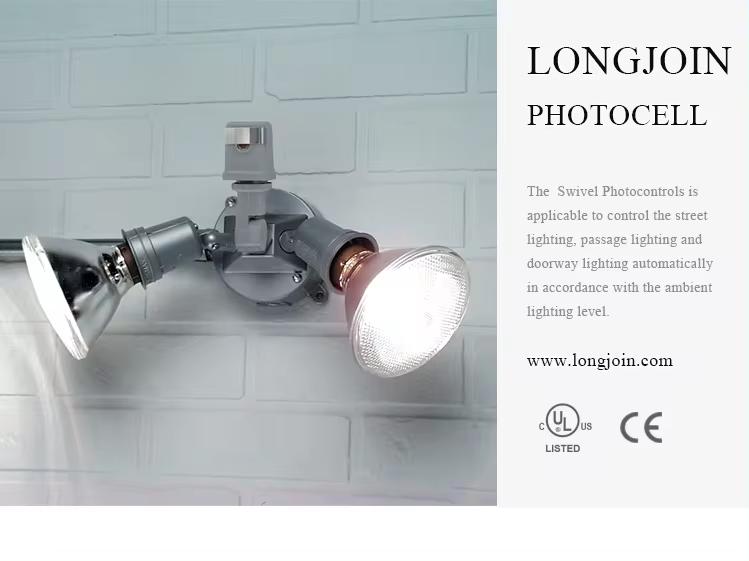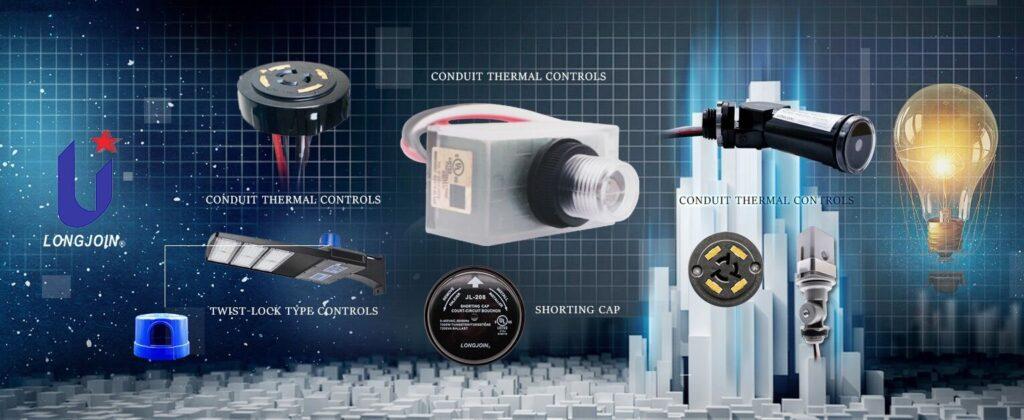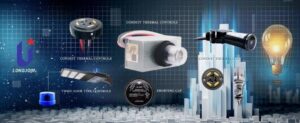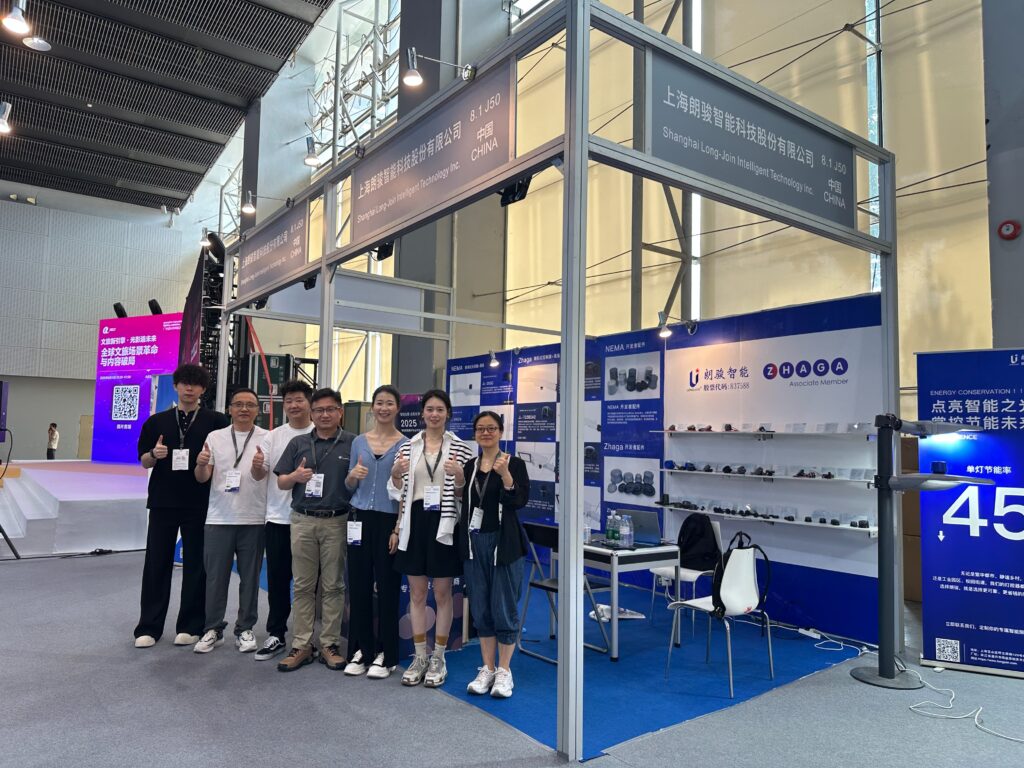مخطط تفصيلي
- مقدمة
- What Is Working Humidity in Photocells?
- How Photocells Interact with Their Environment?
- What Does the IP54 Rating Really Mean for Photocell Protection?
- How Does IP54 Compare with IP44, IP65, and IP67?
- What’s the Difference Between External and Internal Humidity in Photocells?
- Why Should You Follow the Manufacturer’s Recommended Humidity Range?
- How Do Different Climates Affect Photocell Performance and Selection?
- How to ensure waterproofing beyond IP54?
- What Are the Best Installation Practices for Humid Environments?
- خلاصة القول

أجهزة استشعار الضوء are essential in outdoor lighting systems. From minimizing light pollution to power and cost savings, and all in between, their importance is critical. But have you ever thought about how humidity affects them?
Working humidity is often ignored as a factor. If uncontrolled, it can reduce sensor accuracy or cause failure. That’s why تصنيفات IP, such as IP54, matter. In this article, we’ll explain what working humidity means for أجهزة استشعار الضوء. We’ll also show why knowing this is key for long-term reliability.
What Is Working Humidity in وحدات التحكم الضوئية?
رطوبة العمل is the allowable ambient RH for safe and accurate photosensor operation. Exceeding that—especially through condensation—compromises reliability and shortens service life. It refers to the ambient moisture level—in terms of relative humidity (RH)—where a مفتاح مستشعر الضوء is designed to operate safely.
Why Humidity Matters for Photocontrol Receptacles Operation
Manufacturer Spec Limits
Most outdoor مستشعرات تبديل الصور, like LongJoin’s, are rated for 96% RH (non‑condensing). Staying within this range prevents internal moisture issues.
Insulation Absorption Risk
Moisture absorbed by housing or insulation can reduce electrical resistance and create leakage paths.
Condensation & Corrosion
In high-humidity conditions, water can ingress inside and create short circuits or corrode contacts.
Signal Distortion
Water vapor can cause stray electrical currents and noise, leading to false “light/dark” triggers.
كيف عناصر التحكم في الإضاءة Interact with Their Environment?
Outdoor streetlight photocells are always exposed to the open air. They are mounted on poles or fixtures to detect ambient light. Usually placed at the top of poles, they avoid shadows but stay vulnerable to rain, fog, dust, and temperature shifts.
Common Environmental Stressors
- Rain and precipitation cause water splashes. These splashes can cover sensor windows and trigger false readings.
- Fog and high humidity lead to condensation on sensors. This reduces the accuracy of light detection.
- Dust and pollution gather on the lens, making sensors slower to respond or causing signal drift.
All these conditions can shift light sensitivity. That can lead to lights turning on too early or staying on too late. Which in turn raises energy and maintenance costs.
What Does the IP54 Rating Really Mean for مستشعر الضوء Protection?
IP means Ingress Protection, as defined by IEC 60529 standards. The first digit, i.e 5, shows dust protection. The second digit, i.e 4, shows water resistance.
IP54 offers basic dust protection and splash resistance. It suits normal outdoor lighting spots. But it’s not made for heavy or constant water exposure.
Breaking Down IP54
- 5: Some dust may enter, but not enough to affect how it works.
- 4: Offer barriers against water from any direction for up to 10 minutes.
IP54 performs well in light rain and dusty spots. It’s used in semi-sheltered places like under eaves or on light poles. But it’s not right for always-wet areas or where high-pressure washing happens.
How Does IP54 Compare with IP44, IP65, and IP67?
| Rating | Solid Protection | Water Protection | Typical Use | الايجابيات | سلبيات |
| IP44 | Blocks >1 mm solids | Splash resistant | Covered outdoor or bathrooms | Cheap & basic | Doesn’t seal dust & vulnerable to heavy rain |
| IP54 | Limited dust ingress | Splash resistant | Semi‑outdoor fixtures under light exposure | Dust shield + splash guard | Not for harsh weather |
| IP65 | Fully dust-tight | Low-pressure jet resistant | Uncovered outdoor lights & streetlights | Strong protection | Higher cost |
| IP67 | Fully dust-tight | Temporary immersion up to 1 m/30 min | Floodlights, areas prone to soaking | Waterproof enough | Expensive, overkill for mild climates |
What’s the Difference Between External and Internal Humidity in Photocells?
Working humidity means the moisture in the air around the device. It does not mean moisture trapped inside the street light sensor’s case.
Ambient humidity shows the outside RH value, like 10–90 % RH non-condensing. Internal moisture depends on how well the case and seals are built. Even when the outside RH is fine, trapped air inside can cause condensation if temperatures drop below the dew point.
Why Internal Condensation Still Matters?
Moisture ingress can be a killer for various reasons.
- It can lead to corrosion.
- It can initiate short circuits.
- It can lead to insulation failure.
While using heaters, drying agents (desiccants), or vents helps prevent this, these are not effective remedies. An IP rating of 54 or above not only prevents moisture ingress but also helps minimize complete system failures.
Why Should You Follow the Manufacturer’s Recommended Humidity Range?

Most line‑voltage photocells are rated for 96 % RH non‑condensing. Some exceptional models, like LongJoin’s, could tolerate RH slightly above this. However, if the recommended humidity range is not followed, this could have severe consequences, including:
- Excess moisture lowers insulation resistance. This can cause current leakage.
- High RH in the presence of contaminants corrodes metal parts.
- Moisture accelerates polymer breakdown, reducing sealing and lifespan
- Erratic switching due to current leakage or contact faults.
- Drifted sensitivity from film or diaphragm moisture absorption.
Long-term exposure to RH above the rating in tropical or coastal zones can reduce photocell lifespan by 30% to 50%. The only way out is to adhere to the manufacturer’s RH specs.
How Do Different Climates Affect خلية ضوئية للتحكم في الضوء Performance and Selection?
| منطقة Key | العوامل البيئية | Challenges for Photocells | Recommended Design Features |
| Humid Tropics | High humidity, frequent rain, constant warmth | Moisture ingress, internal condensation, corrosion | IP65+ sealing, conformal coating, breathable vents, desiccant or heaters |
| Arid Deserts | Low humidity (<20%), extreme day-night temp variations | UV exposure, thermal shock, dust intrusion | UV-stable housing, temperature-resistant materials, IP65+ dust sealing |
| Coastal Areas | Humidity with salt-laden air, fog, occasional storms | Saline corrosion, hygroscopic film buildup, connector degradation | Corrosion-proof metals (e.g. stainless steel), salt spray protection, conformal coating |
How to ensure waterproofing beyond IP54?
- Silicone or EPDM can be a viable solution to seal gasket joints.
- Housing made from material like polycarbonate or anodized aluminum offers good UV protection and eventually degrades less.
- Apply conformal coatings on PCBs.
- Add breathable membrane vents to equalize internal pressure.
- Seal cable entry points with waterproof strain reliefs or silicone fillers.
- Integrate desiccant packs inside the housing.
- Use potting compounds in key areas.
- Finally, opt for connectors rated IP67 or higher.
What Are the Best Installation Practices for Humid Environments?

Orientation, Mounting Height, and Shading
- Mount photocells facing north (in the Northern Hemisphere) to avoid direct sun glare.
- Place them 1.8–2.5 m (6–8 ft) high to reduce splashes and dust from traffic.
- Use small visors or hoods to shade from rain and direct light.
Avoiding Trapped Moisture During Installation
- Inspect seals and gaskets before final assembly.
- Ensure no water is inside the housing before closing.
- Angle enclosures slightly downwards so that any water drains.
- Apply a silicone sealant bead around cable entry points to block capillary moisture.
خلاصة القول
Working humidity plays a vital role in the stable operation of outdoor photocells. Even with IP54 protection, regional conditions may demand stronger safeguards. For environments that need higher resilience, تشي-سوير offers durable photocells with IP65+ ratings—built to last where others fail.
الروابط الخارجية
- https://www.iec.ch/ip-ratings
- https://learn.kaiterra.com/en/resources/what-is-humidity
- https://en.wikipedia.org/wiki/List_of_IEC_standards
- https://www.trustedreviews.com/explainer/what-is-ip54-4253976
- https://www.electricalcounter.co.uk/articles/what-is-ip44
- https://www.onlogic.com/blog/what-does-ip65-mean/
- https://www.candtsolution.com/news_events-detail/what-does-ip67-rating-mean/






